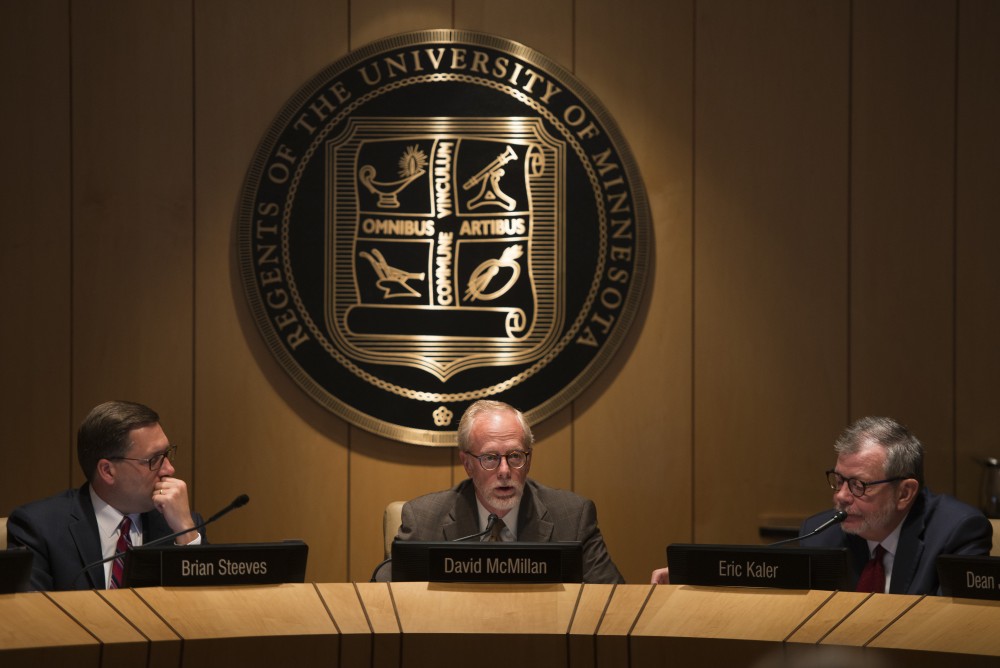As the search for the next University of Minnesota president enters its final stages, many are waiting to see if the University will publicly name multiple finalists for the position — a decision that would depart from recent history.
In the past decade, the University has frequently named a lone finalist for top positions, drawing criticism and a lawsuit about lacking transparency at the state’s largest public university. Some faculty, legal experts and regents have advocated for that process to change this time around.
“Pretty much everybody involved is hopeful that there will be multiple finalists,” said Joseph Konstan, the head of the Faculty Consultative Committee. Konstan has advocated for the University to disclose demographic information about candidates, which the search committee recently released.
The Presidential Search Advisory Committee announced a nine-candidate shortlist Nov. 16, selecting a smaller number of front-runners from that group, though the number of candidates and their names were not disclosed. The committee will submit its list of semi-finalists to the regents in coming weeks.
Regents are expected to name finalists for the position next month. But until then, most of the process will likely happen behind closed doors. Under the Minnesota Data Practices Act, the names of applicants are not public until candidates are named as finalists.
Although hopes are high among some on campus, the University’s hiring track-record does not bode well for those who would like to see multiple finalists for the presidency. The last two presidential searches ended with only one person publicly named. President Eric Kaler was selected as the lone finalist for the position in 2010, after several candidates dropped out before they were publicly named because they did not receive assurance that they were the front-runner, the Star Tribune reported.
In 2002, the University did not disclose the names of the three finalists selected to replace former President Mark Yudof. Although he wasn’t a finalist, the University instead gave the job to then-interim President Robert Bruininks after a series of closed-door meetings, the Minnesota Daily reported.
That process led to a 2004 Minnesota Supreme Court ruling that the University violated state law by interviewing finalists in private in a lawsuit brought by multiple news organizations, including the Daily.
Other searches for top positions at the University have also ended without multiple candidates publicly announced. Athletic Director Mark Coyle was named as the lone finalist for the position following the 2015 resignation of Norwood Teague amid sexual harassment allegations; Teague was also named as a lone finalist.
“Essentially, what the University has done in the presidential selection by and large, and other selections of high officials, is they’ve presented one finalist as a ‘fait accompli,’” said Marshall Tanick, a Twin Cities constitutional and employment law attorney, who has criticized the hiring process of top University officials. “And if there’s only one finalist, there’s not much to choose from.”
But some in higher education say protecting the candidates’ confidentiality ensures the best applicants remain in the running.
Judith Block McLaughlin, a professor at Harvard University who consults on higher education leadership, said that disclosing candidates can jeopardize their careers and push some to drop out of the search process.
“I would argue that for a public institute, just like a private institute, the institution should want, the board should want and the campus should want the strongest possible finalist pool,” McLaughlin said. “You don’t want people dropping out who would be outstanding candidates and having a weaker pool of people in the end.”
At the University, the names of the three finalists selected to replace former President Nils Hasselmo were publicly leaked before the regents released them, prompting two of the candidates to withdraw from the process, the Daily reported. Yudof, the last candidate standing, started as president in 1997.
Regent Michael Hsu said he would like to see the regents publicly name three to five finalists. “We are a public institution and the public has a right to know, to see who the finalists are before the decision is made,” he said.
Hsu said the public disclosure of information comes with the job of the University’s top executive. “Real candidates, regardless of how good or bad they are in my way of defining it, got to be public. That’s the name of the game,” he said. “That’s what the laws say, and we should be following the law.”
But it remains to be seen whether the University will announce several finalists, or do as it has in recent history: choose the next president from a group of one.
Correction: A previous version of this article misstated when Mark Yudof became president of the University of Minnesota. Yudof became president in 1997.








